Leveling is a kind of geodetic measurements. It is used to find the relative heights of various points on the earth's surface. Such natural objects as rivers, seas, oceans, fields or other starting points can be taken as a conditional level in such measurements. In fact, leveling is the determination of the value of the excess of the surface of each object over a given (reference). Such measurements are required to compile an accurate relief of the area under study. In the future, these data are used in the preparation of terrain plans, maps, or to solve specific applied problems.

What types of leveling are there?
Such measurements can be carried out by a variety of methods, differing in the equipment or technology used. Consider what are the main types of leveling. The most common are five methods: geometric, trigonometric, barometric, mechanical and hydrostatic measurement of surfaces. Let's get to know each of them in more detail.
Geometric leveling
With this method of measuring the terrain, a specialgeometric rail and device level. The principle of shooting is to install a rail with strokes and divisions at the required point near the surface under study. After that, using a horizontal sighting beam, the height difference is counted. Geometric leveling is performed according to the principle "from the middle" or "forward". When measuring by the first method, rails are installed at two points on the surface, the device is located between them at an equidistant distance. The result of the survey is data on the excess of one of the bars over the other. The second method is classic - one device and one rail. These leveling methods are the most common. They have found application in the construction of both small objects (houses) and large ones (bridges).
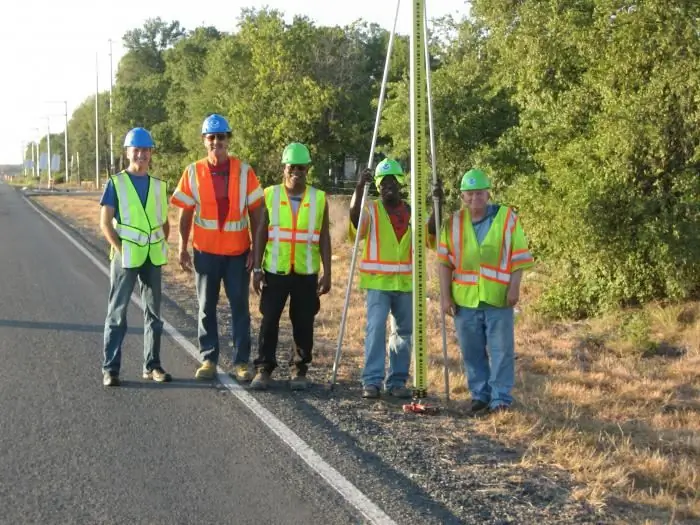
Trigonometric leveling
With this type of measuring work, it is customary to use special goniometric devices, which are called theodolites. With the help of them, information is taken about the angles of inclination of the sight beam, which passes through a pair of given points on the surface. Trigonometric leveling is widely used in topographic measurements to determine the height difference between two objects that are at a considerable distance from each other, but in the optical visibility zone of the device.
Barometric surface measurement
Barometric leveling is a measurement method based on the dependence of atmospheric air pressure on the height of a point on the surface being determined. The reading process is carried out usingbarometer. This leveling system must take into account a number of corrections for the actual air temperature and its humidity. This method has found application in hard-to-reach areas (for example, in mountainous conditions) during various geographical and geological expeditions.
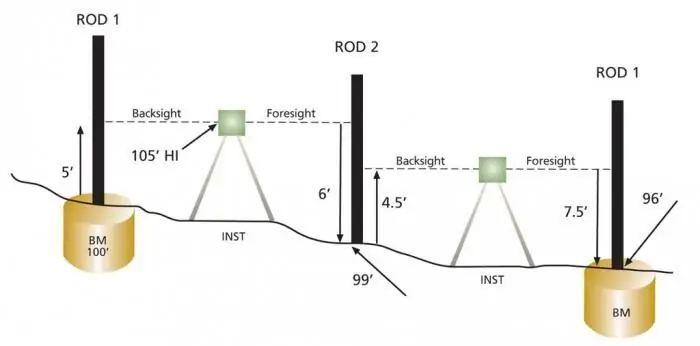
Mechanical (technical) surface measurement
Technical leveling involves the use of a special device - automatic leveling. With it, the profile of the area under study is drawn in automatic mode using a friction disk that records the distance traveled, and a set plumb line that sets the vertical. Such a device is usually installed on a vehicle and driven from one determined point to another. Technical leveling allows you to determine the height difference between the studied objects, the distance between them and the terrain profile, which is recorded on a special photo tape.
Hydrostatic surface measurement
Hydrostatic leveling is a method based on the principle of communicating vessels. Shooting in this way is carried out using a hydrostatic device, which works with an error of up to two millimeters. Such a level is assembled from a pair of glass tubes connected by a hose, this system is filled with water. The measurement process is carried out as follows - the tubes are attached to the rails on which the scale is applied. After that, the bars are installed near the objects under study, the divisions mark the numerical valuedifference between two levels. This design has a significant drawback, namely the limited measurement limit, which is determined by the length of the hose.
The described leveling methods (except for mechanical ones) are very simple and do not require any specific knowledge from the operator, therefore they are widely used in construction and other areas of the national economy.
Measurement classes
In addition to the measurement technique, leveling is usually divided into accuracy classes. Each of them corresponds to a certain type and method of information retrieval. Let's consider what leveling classes exist.
- First class is considered highly accurate. It corresponds to a root-mean-square random error of 0.8 millimeters per kilometer and a systematic error of 0.08 mm/km.
- The second class is also considered highly accurate. However, the error here is slightly higher - the rms error is 2.0 mm/km, and the systematic error is 0.2 mm/km.
- Third class. It corresponds to a standard error of 5.0 mm/km, and the systematic is not taken into account.
- Fourth grade. It corresponds to a root-mean-square error equal to 10.0 mm/km, the system error is also not taken into account.
Depending on the features of the terrain and the objectives of the survey, various methods of surveying data can be used. For example, by polygons, by parallel lines, or by leveling the surface by squares. The latter technique is the most widely used, it is widely used for data collection fromlarge open areas with relatively low cross-sectional heights. Let's consider it in more detail.
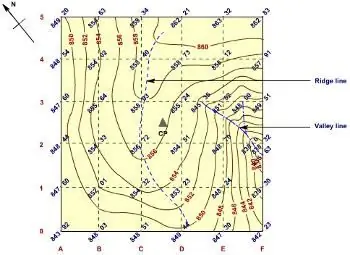
Squaring
Surface leveling by this method is performed in order to obtain large-scale topographic plans of flat areas. The smooth position of control points is determined by laying traverses. And heights - by the method of geometric measurement using technical levels. The process of data acquisition can be carried out in two different ways: by laying leveling moves with a gradual breakdown of the diameters and by squares.
Leveling by squares is performed by breaking on the ground using a measuring tape and a theodolite (a grid with a cell side of twenty meters) when measured at a scale of 1:500 and 1:1000, forty meters - when shooting at a scale of 1:2000 and one hundred meters at 1:5000.
At the same time, the situation of the studied territory is fixed and an outline is drawn up. These procedures are performed in the same way as in theodolite survey. In addition to the tops of the cells, characteristic relief objects are fixed on the ground - plus points: the top and base of the hill, the bottom and edges of the pit, points on the spillway and watershed lines, and others.
Surveying justification is created by laying leveling and theodolite passages along the outer boundaries of the grid of squares, which are then tied to the points of a single state network. The heights of plus points and cell vertices are determined by the method of geometric leveling. If the side lengthsquare forty meters or less, then from one station they try to measure all the determined points. The distance from the device to the bar should not exceed 100-150 meters. If the length of the side of the square is one hundred meters, then the level is placed in the center of each cell. According to the field survey of the area, the leveling log and the outline of the measurements are compiled using the method of squares.
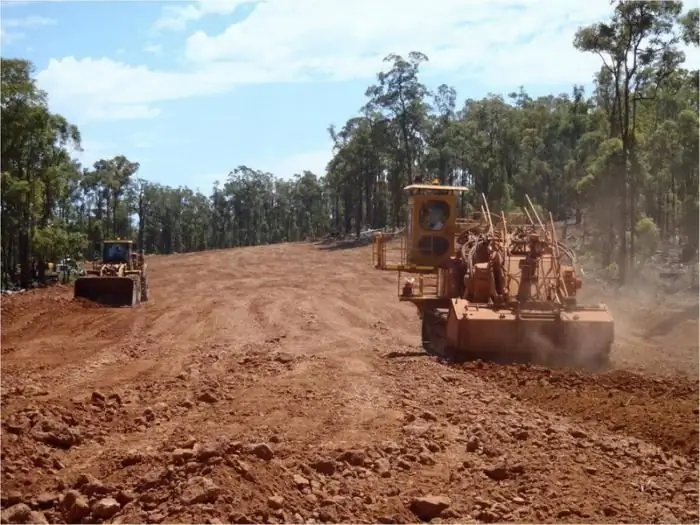
Log and leveling outline by squares
The log contains data on the size of the side of the cell, binding the coordinate grid to theodolite traverses (geodetic justification). In addition, binding to terrain objects is indicated - lakes, hills, and so on. It should also be noted from what positions the leveling of the terrain was carried out. The outline contains the results of shooting each of the squares. At the top and plus point of each cell, the readings from the black side of the bar (in meters), as well as the calculated heights, are indicated. This calculation is performed on the horizon of the instrument. The heights of the cell vertices are determined as the difference between the horizon of the instrument at the station and the reading on the rail.
In order to control the surface measurement process for two cell vertices, leveling is performed from two different stations. Drawing up a plan based on the obtained materials for taking surface data begins with fixing on the tablet according to the coordinates of the points of the unified state geodetic network, objects of survey justification (leveling and theodolite moves), plus points, vertices of squares and the situation.
Application method
When leveling the territory in a wayapplications of theodolite and leveling passages, broken down into diameters, the passages are laid along the natural characteristic lines of a given area, for example, along weirs or watersheds. In such works, cross-sections and pickets should be set every forty meters when surveying at a scale of 1:2000 and every twenty meters when surveying at a scale of 1:1000 and 1:500. At the points of inflections of the slopes, plus objects are marked. In the process of setting up pickets, the situation should be fixed and an outline drawn up. Leveling records are made in the journal. It marks the serial numbers of the pickets, readings on the red and black sides of the rails, the distances of positive objects from the nearest pickets. Based on the results of leveling, a topographic plan of the territory, transverse and longitudinal terrain profiles are compiled.
It is advisable to measure the surface in areas of the proposed site for landscaping and vertical planning of the territory. An example is the landscape design of the area surrounding any architectural monument, or a garden and park area.
What is a level?
To carry out a geometric measurement of the terrain, which is widely used in construction, levels of various designs are used. These devices, according to their principle of operation, are usually divided into: electronic, laser, hydrostatic and optical-mechanical. All levels are equipped with a telescope rotating in a horizontal plane. The modern design of such a measuring device provides for automatic compensationfor setting the visual axis to the working position.
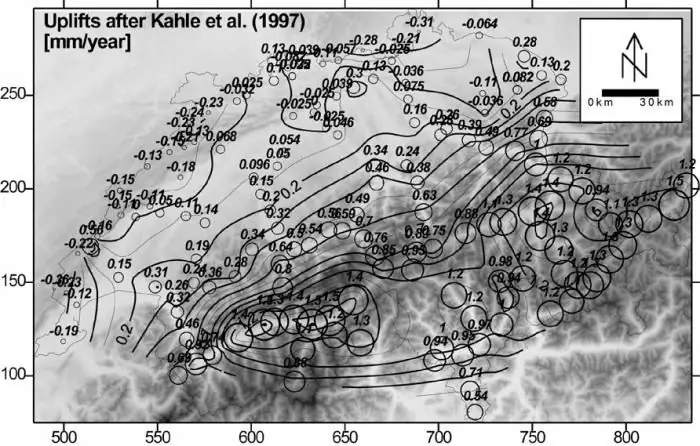
History of leveling
The first information that came to modern man about leveling refers to the first century BC, namely the construction of irrigation canals in Ancient Greece and Rome. Historical documents mention a water measuring device. Its invention and use is associated with the names of the ancient Greek scientist Heron of Alexandria and the Roman architect Mark Vitruvius. The impetus for the development of these measuring instruments and leveling methods was the creation of a spotting scope, a barometer, a cylindrical level, and a graduation grid in spotting scopes. These inventions date back to the 16th and 17th centuries, and they made it possible to develop a system for accurately surveying the earth's surface.
In Russia, during the time of Peter the Great, an optical workshop was founded, where, among other things, they also produced levels, only then they were called spirit levels with a pipe. I. E. Belyaev was engaged in the development of levels in the workshop. In the same period, the first measuring instruments appeared, based on barometers. At the beginning of the nineteenth century, the first trigonometric levels appeared, with their help very large-scale work was carried out to determine the difference in the levels of the Azov and Black Seas, the height of Mount Elbrus was measured. The use of geometric instruments is recorded in the middle of the nineteenth century. So, in 1847 they were used in the construction of the Suez Canal. In our country, geometric levelingsurface was used in the construction of water and land roads. The beginning of the creation of the domestic state network is considered to be 1871. Then work began on fixing and installing points that served as the basis for topographic surveys.
Application of leveling
The result of leveling is the creation of a single reference geodetic network, which serves as the basis for topographic measurements of the area or various geodetic measurements. Shooting is widely used for research and scientific purposes: when studying the globe, the movement of the earth's crust, to fix fluctuations in the level of the seas and oceans.
Leveling is also used in solving various applied problems that are associated with the construction of various objects, laying communication lines, utilities, etc. For example, terrain measurement is necessary to transfer design decisions in height, in addition, during installation works on the installation of building structures. When solving such problems, the data obtained by the geodesy service are always used. Also, directly for solving various highly specialized tasks, automatic information retrieval systems are used. Such tasks include, for example, the repair and construction of the roadway. The sensors included in the automatic leveling device are installed on railway cars, cars, resulting in a ready-made profile of the area under study in the shortest possible time.
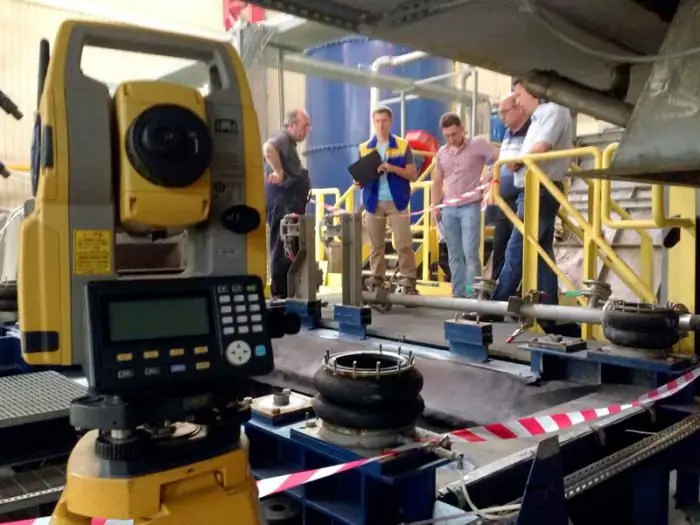
Modern technologies
To date,due to the extraordinary rapid development of science and technology, various technical know-how is used to level the surface.
- Laser. Their work is based on reading terrain parameters using a laser scanning device.
- Ultrasonic. The main element of such a device is an ultrasonic sensor emitting waves.
- GNSS-technology, which is associated with obtaining information about the current coordinates using satellite communications. Such equipment provides very high leveling accuracy.
To ensure the efficient processing of a large number of information flows obtained in the process of applying the above know-how, it is required to have appropriate special software that will perform tasks related to storing, managing, visualizing and processing data.
Modern leveling systems in road construction
Automated systems are widely used in modern road construction. They allow you to manage road construction equipment, given its current position. At the same time, the automatic leveling of the route is distinguished by the high accuracy of the work carried out, which significantly improves the quality of the roadway being produced, as well as reduces the construction time. Such devices, installed on asph alt pavers, road milling machines, bulldozers, allow you to eliminate damage and defects of the old coating when laying a new layer. These levels control the cross-slope of the road, perform it according to precisely specified projectparameters. Modern surface measurement systems for road construction equipment are divided into several types depending on the technology used.
- Ultrasonic devices with different number of sensors.
- Laser pickup systems.
- Device based on satellite GPS technology.
- 3D system based on total station principle.
If necessary, depending on the complexity and peculiarity of the work being carried out, one or another automatic leveling technology can be used.






